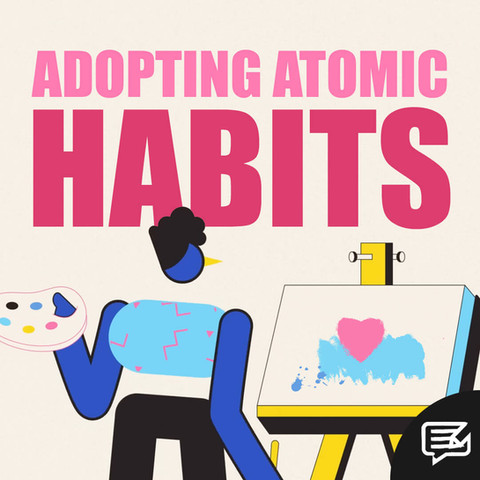
24.07.21
REDUCING HOSPITAL ADMISSIONS
Towards the end of October 2020, Forbes published an article detailing a trial in which an artificial intelligence-based diagnostic tool had reduced hospital admissions by more than 50%.
Even in “normal times”, such a substantial reduction would be welcome news. But at a time when a global pandemic has pushed many of the world’s health care systems to breaking point, it’s very welcome news indeed.



The tool’s manufacturer – Clare Medical – concluded that “predicting which patients have a higher probability of experiencing medical ‘events’ significantly reduces the probability of such events occurring.” Prevention is better than cure – as the adage goes – and this platform affords clinicians the opportunity to intervene much earlier.
According to Forbes:
"The study was conducted with predominantly elderly patients in New Jersey hospitals with at least one underlying medical condition. Compared to the general population, such patients are at high risk for a variety of clinically significant outcomes, including urinary tract infections, pneumonia, falls and fractures, the exacerbation of chronic obstructive pulmonary disease, worsening diabetes, and worsening chronic kidney disease.
"However, by using its artificial intelligence-based tool - which uses an algorithm to screen patients’ medical charts and data - Clare Medical’s team was able to identify 12.8% of the participating patients as being at a 30-day increased risk of requiring a hospital or emergency room visit. This resulted in physicians being notified and patient cases being reviewed and acted on.
"As a consequence, only 6.3% of patients – or 51% of the 12.8% identified as being at-risk - actually ended up requiring a hospital or ER visit."
The report notes an error range of 3%, so the initial identification of 12.8% at-risk patients may have been over – or possibly under – estimated. Regardless, utilising AI and big data is the next logical step in pre-emptive health care, and will surely only improve with time.
Clare Medical CEO, Ron Lipstein, told Forbes:
"This diagnostic tool has the potential to be a paradigm shift in how we surveil and monitor patients. By providing an alert to physicians for high risk patients, we believe it provides a remarkable ability to intervene early and positively alter a patient's care trajectory."
Admission after the onset of a condition puts patients at greater risk. Indeed, it is estimated that 300,000 patients acquire infections in hospital in England every year. With a deadly virus thrown into the mix, health care providers are struggling to screen patients using manual methods. Receiving support from machine-learning tools may be humanity’s best bet, and one that is sure to save hospitals significant time, resource and money – and the lives of countless patients.
Forbes continues:
"The UK Government estimated in July that declines in emergency care, adult social care, elective care and primary care could result in 10,000, 16,000, 12,500 and 1,400 excess deaths respectively over 12 months (the figure for elective care covers a five-year timeframe), assuming that Covid-19 care continues to impact medical treatment for other conditions.
"This is the kind of problem that AI diagnostics could help ease. By reducing the time and resources needed to provide reliable indicators of likely health events and conditions, artificial intelligence-based tools could potentially make it easier for hospitals to confront Covid-19 while still continuing to screen patients for other diseases."
Reassuringly, Clare Medical is not the only company using AI to accelerate and improve diagnosis.
In January 2020, a new study was published by The American Journal of Managed Care: Using Applied Machine Learning to Predict Healthcare Utilization Based on Socioeconomic Determinants of Care.
The study abstract explains:
Objectives:
To determine if it is possible to risk-stratify avoidable utilization without clinical data and with limited patient-level data.
Study Design:
The aim of this study was to demonstrate the influences of socioeconomic determinants of health (SDH) with regard to avoidable patient-level healthcare utilization. The study investigated the ability of machine learning models to predict risk using only publicly available and purchasable SDH data. A total of 138,115 patients were analyzed from a deidentified database representing 3 health systems in the United States.
Methods:
A hold-out methodology was used to ensure that the model’s performance could be tested on a completely independent set of subjects. A proprietary decision tree methodology was used to make the predictions. Only the socioeconomic features - age group, gender, and race - were used in the prediction of a patient’s risk of admission.
Results:
The decision tree-based machine learning approach analyzed in this study was able to predict inpatient and emergency department utilization with a high degree of discrimination using only purchasable and publicly available data on SDH.
Conclusions:
This study indicates that it is possible to risk-stratify patients’ risk of utilization without interacting with the patient or collecting information beyond the patient’s age, gender, race, and address. The implications of this application are wide and have the potential to positively affect health systems by facilitating targeted patient outreach with specific, individualized interventions to tackle detrimental SDH at not only the individual level but also the neighborhood level.
SDH data represents another piece of the puzzle – and an important one at that. By identifying at-risk communities at an earlier point in time, preventative care practices can be put in place. And not just to tackle viruses such as COVID-19, but chronic diseases, mental health conditions and lower life expectancy.
Artificial intelligence also has scope to reduce hospital waiting times, as this January 2020 article from the Independent attests.
Cast your mind back to December 2019. It was a different world then. Excessive alcohol and rowdy nights out contributed towards a heaving A&E department. At the time, emergency department waiting times in England were the worst on record, with 2000 patients waiting more than 12 hours for a hospital bed.
Christian Subbe, a senior clinical lecturer whose research formed the basis of the article, explains:
"Part of the problem is that patients who are admitted as emergencies to hospital can be really sick and unstable. So making the decision as to when they are getting better and are safe to go home (and the bed is free) is complicated and risky.
"Indeed, for every five patients sent home from hospital, one will be brought back as a medical emergency within a month. But our research might have found a way to help unblock hospital beds and help doctors and nurses know quickly which patients are safe to go home.
"In our latest research, we used machine learning – or artificial intelligence (AI) – to help doctors and nurses be confident as to which patients are ready to leave hospital and which should stay. We used changes in vital signs such as blood pressure and heart rate to highlight those patients who might be well enough to leave hospital.
"In the unit in Bangor where we tested this system with 790 seriously ill patients, we found that using AI in this way would have meant 2,500 fewer days in hospital for these patients."
Yes, you read that right. 2,500 fewer days. If such a system were to be rolled out nationally, it could be genuinely life-changing.
What I admire most is the simplicity of it – at least from a practitioner perspective…
"The system basically gives each vital sign a score between zero and three points – zero points for normal measurements and up to three points for very abnormal measurements. All points are added up: if the total score is zero, the patient is likely to be well. If the total score rises the patient is at higher risk – with 20 being the highest score.
"In our study, the computer looked at vital signs of sick patients who were admitted to hospital as emergencies with medical conditions such as asthma, heart failure and stomach ulcers. The computer observed and learned the scores for two days and then started to look at trends – analysing how often the scores went up and down and how high or low the scores went."
Subbe continues:
"During the study we found that patients with total scores of three or less for more than 96 hours are usually “stable”. They were unlikely to become unwell again during the rest of their hospital stay and could most likely safely leave hospital. We calculated that implementing this simple rule alone would have saved 2,143 days in hospital for the 790 patients.
"But when the computer used AI it was possible to tell who the “stable” patients were much earlier – after just 12 hours. Working out which patients were OK to go home at this point would have meant 2,652 fewer days in hospital for the patients in our study."
A January 2020 article from the World Economic Forum envisions much-improved patient and staff experiences in the near-term, signalling 2030 as a time when AI-powered predictive care, networked hospitals and connected care could fundamentally change how health systems operate.
But that’s still almost a decade away.
The article’s author, Carla Kriwet – CEO, Connected Care and Health Informatics at Royal Philips – explains:
"Back in 2020, we’re still a long way from achieving this vision. Unrelentingly complex technology, IT and data systems still impede staff workflows and threaten the continuity of care in the clinical areas in which they are used to help diagnose, treat, monitor and, hopefully, prevent and cure diseases.
"Nevertheless, I see clear signs that all three of these ideas can one day become reality. Intelligent systems are already capable of performing expert tasks and augmenting human capabilities. Examples include AI that can detect cancerous lesions on an image, analyse and quantify physician notes or optimize patient flow in emergency care. Inside hospitals, the application of AI-enabled predictive analytics is already helping to save lives in intensive care units. Outside of hospitals, it is helping to identify certain at-risk groups so that pre-emptive primary or community care can reduce the need for hospital admissions."
Kriwet continues:
"But it’s a long and complex journey which no single company or organization can take alone. I believe that governments, health systems and private companies must continue working together in order to ensure that AI systems are fully interoperable and transparent and prevent bias and inequality. As healthcare continues to globalize, the need for international standards that protect the way in which AI uses personal data will become an urgent priority.
"Perhaps most of all, I believe we must keep in mind that AI’s most powerful use is to enhance human capabilities, not replace them.
"The heart of connected care isn’t new technology, it’s people: the people who need to be cared for and the people who work so tirelessly to deliver it to all of us."
I couldn’t have put it better myself.

























































